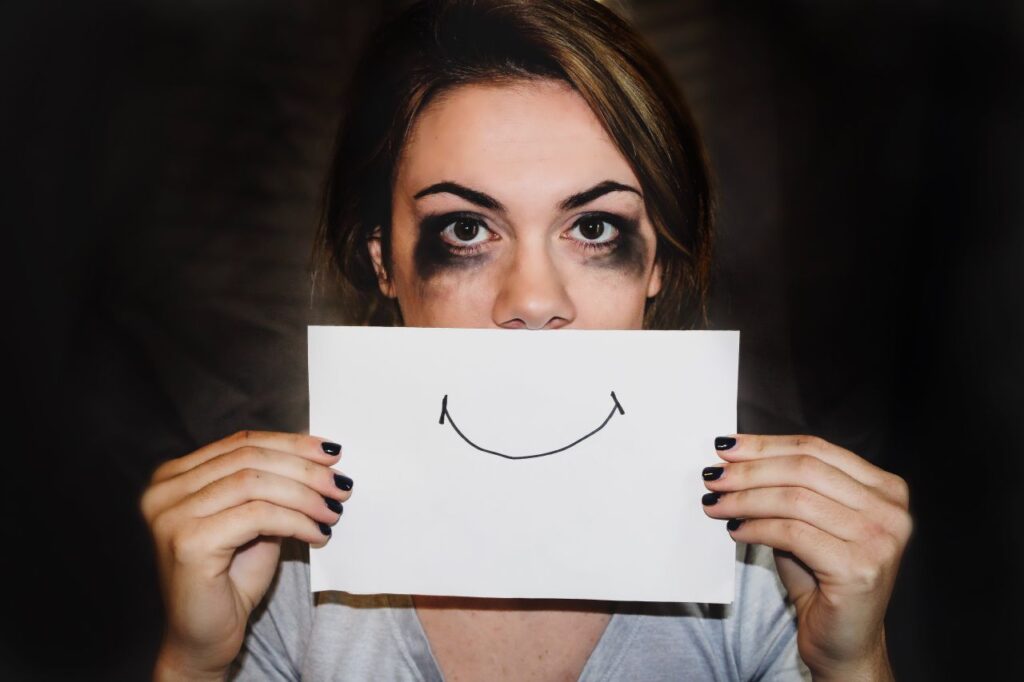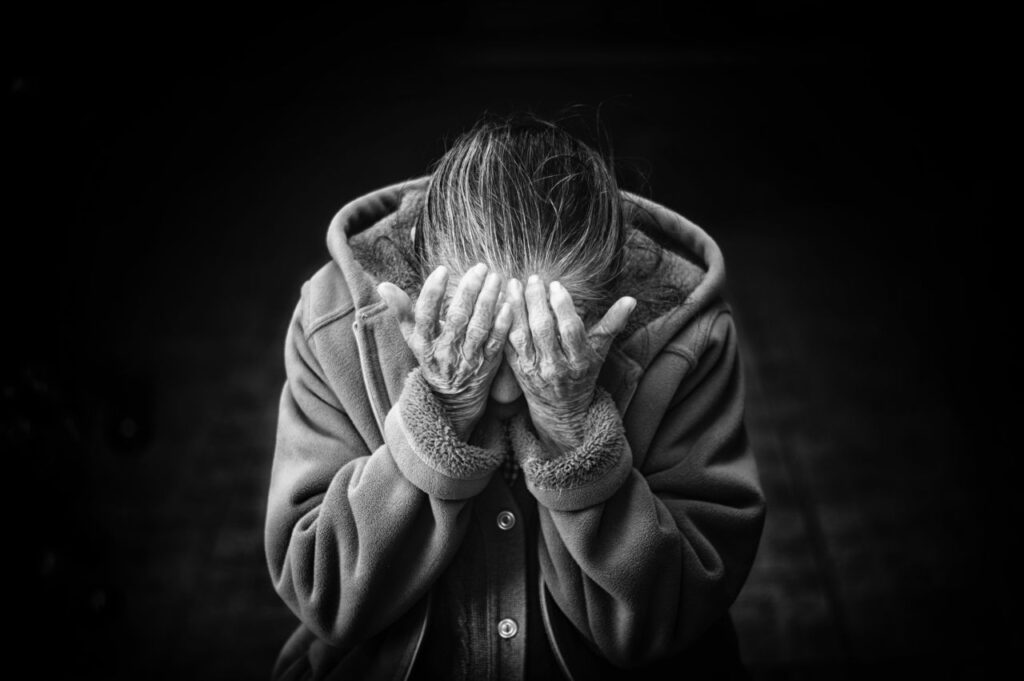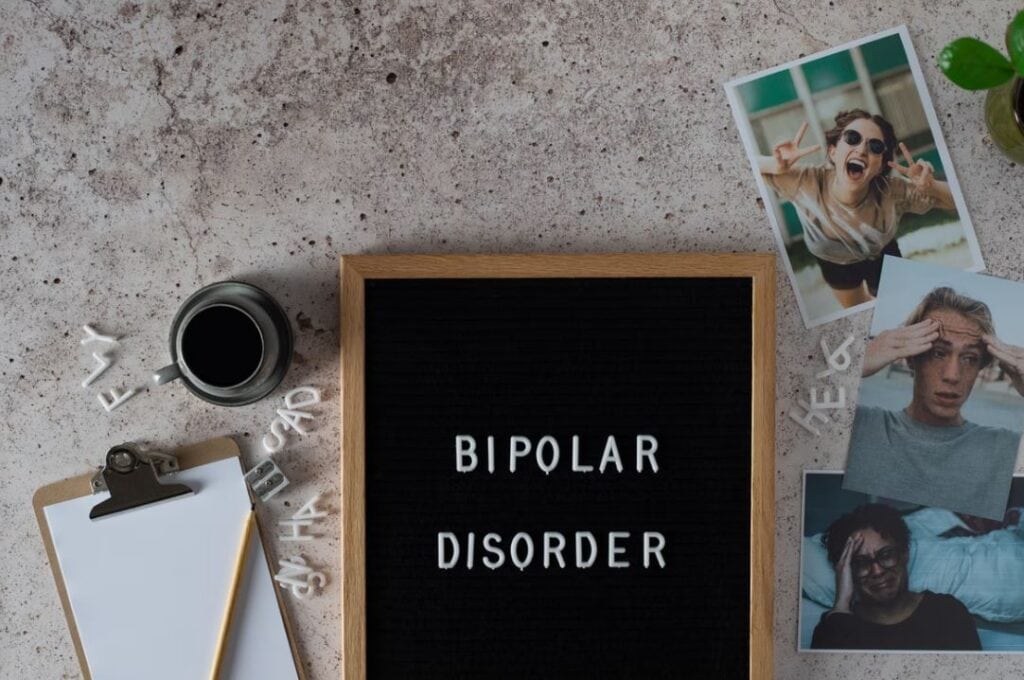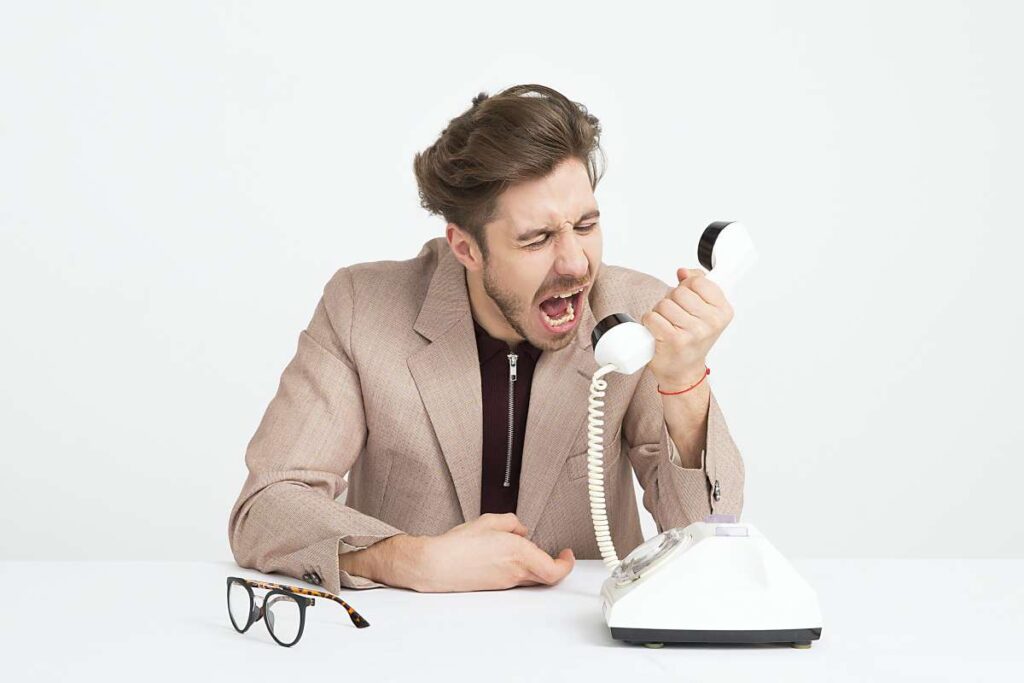A panic attack can render its victim completely helpless, as anyone who has experienced one will attest. There are those for whom the mere thought of having a panic attack is enough to trigger a full-blown attack.
Do not worry if any of those descriptions fit you; you are not alone. Numerous millions of people all around the world suffer from panic attacks every year. We may breathe a sigh of relief, though, for there are methods to deal with them. Some of the most helpful strategies for coping with panic attacks are discussed in this article. If you're interested in learning more, keep reading!
Frequently Asked Questions
The following are examples of possible causes of panic attacks:
- Over-breathing.
- Prolonged durations of mental strain.
- Activities that cause to extreme bodily reactions (such exercising or drinking large amounts of coffee, for example), as well as the physical changes that occur following illness or an abrupt shift in surroundings.
Take a warm shower or a bath to relax. Permit the warmth to soothe you, and give yourself permission to feel protected by it. The sensation of cleanliness itself has been shown to reduce feelings of anxiety, and the overall cleansing process can help reduce feelings of panic.
Attacks of panic are not harmful, and experiencing them will not drive you insane. There is no correlation between panic attacks and heart attacks. They are simply an unexpected surge of tremendous energy that can cause one to feel a great deal of discomfort.
One of the most important things you can do to help manage your anxiety is to drink enough of water. Even if you do not currently have any emotions of worry, drinking enough water might induce feelings of calmness and relaxation. Attacks of panic are a common side effect of elevated anxiety, which in turn is induced by dehydration.
The ice techniques assist in jolting your body out of the "fight or flight" response and into a more relaxed state. They serve as grounding exercises, helping to divert your attention away from the feelings of panic so that you can concentrate on your body and the world around you. The ice can also cause a pain-like response in your brain, which will drive your neurotransmitters to focus in a different direction.
What Exactly Is An Attack Of Panic?
A panic attack is characterised by an overwhelming sense of fear in a short period of time. Physical symptoms of panic might include, but are not limited to, shaking, disorientation, nausea, irregular heartbeats, dry mouth, dyspnea, sweating, and dizziness.
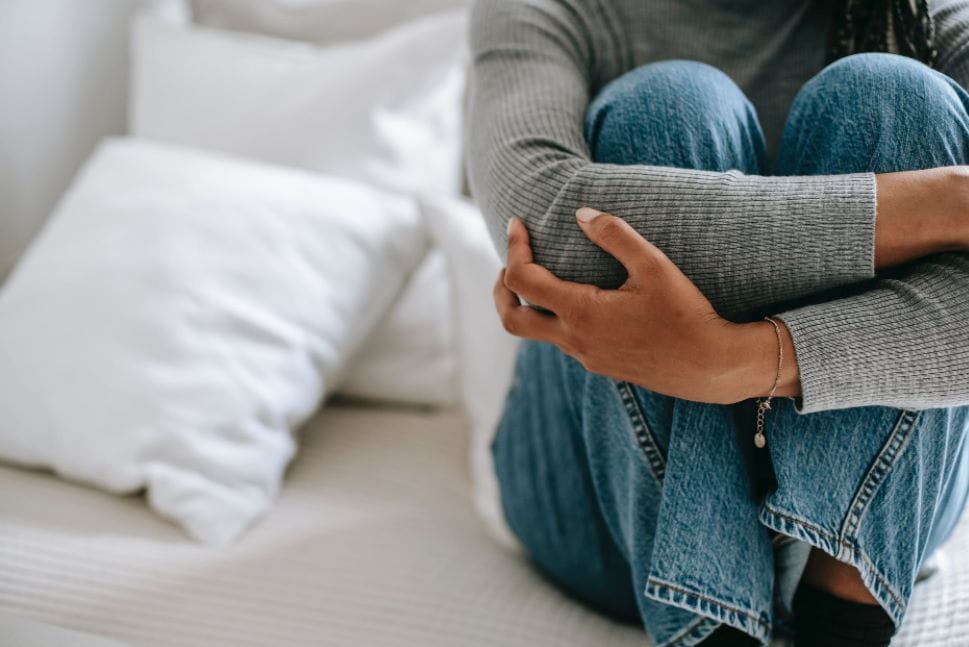
While panic attacks aren't always life-threatening, the symptoms can nonetheless be frightening. They can make you feel like you're having a heart attack, fainting, or even dying. Panic attacks are characterised by a number of physical symptoms, including rapid heart rate, excessive sweating, shaking, and difficulty breathing.
Some people experience chest pain and a loss of connection with reality or themselves during a panic attack, leading them to assume they are having a heart attack when, in fact, they are experiencing the symptoms of a panic attack. Others have reported feeling like they're having a stroke. The typical panic attack lasts anything from five minutes to half an hour.
Causes
Panic attacks can be triggered by many different things, and they can even occur for no apparent cause. If any of the following describe you, you have a greater chance of running into them:
- get panic attacks
- have a dissimilar panic disorder
- utilise specific drugs or have symptoms of a dependency disorder
- use prescribed drugs only.
- who have a medical condition that can cause psychosis, such as an overactive thyroid, are at risk for developing psychosis.
Exposure to a trigger is one of the most common causes of a panic attack; nevertheless, triggers can look very different from person to person. In certain cases, there may be no evident trigger. However, the following have been cited as triggers for attacks in some individuals:
Common Symptoms
The Diagnostic and Statistical Manual of Mental Disorders, Fifth Edition, describes a panic attack as "an immediate rush of extreme anxiety or discomfort" (DSM-5). There is often no warning before the symptoms begin, and they might reach a peak within minutes. If you're experiencing a panic attack, you may notice some of the following signs:
- symptoms such as shortness of breath, the feeling that you are suffocating or being suffocated, or both, ache or discomfort in the chest, discomfort in the stomach, or nausea, vertigo, lightheadedness, or fainting, feeling unsteady, shivering, or a burning sensation, and so on and so forth.
- concern about losing control or "becoming nuts," accompanied by a feeling of numbness or tingling, a sense that things are not as they seem.
- apprehension about dying
How To Prevent And Treat A Panic Attack?
Panic attacks can occur for no apparent reason and can be terrifying. Here is a selection of methods that may be used to prevent or lessen panic attacks. It's possible that some of them will help you immediately, while others will be useful in the long run.
Are you looking for the best rehab centre? Then Refocus Rehab Melbourne is the answer.
Seek Counselling
Cognitive behavioural therapy (CBT) and other types of counselling are often helpful for people who suffer from panic attacks and panic disorders. The purpose of cognitive behavioural therapy (CBT) is to help patients develop healthier coping mechanisms by altering the way they think about stressful or upsetting situations.
Cognitive-behavioral therapy (CBT) is available online or in-person, for individuals or groups, and the length of treatment varies. With the help of your therapist, you'll be put in potentially anxiety-inducing circumstances and guided through them through exposure-based cognitive behavioural therapy (CBT). In addition to influencing one's actions, cognitive behavioural therapy (CBT) may also affect the parts of the brain responsible for panic attacks.
Individuals with panic disorders who underwent exposure-based cognitive behavioural treatment over the course of four weekly sessions showed structural changes in brain regions implicated in panic attacks, according to a study published in 2018. However, this was only a pilot study, and there is obviously a need for more.
Consume Your Medication
Alprazolam, better known under the brand name Xanax, and other benzodazepines are useful tools in the fight against panic attacks.
However, they can swiftly lead to dependence and are ineffective in treating underlying anxiety disorders. This is why doctors usually recommend only taking them briefly in an emergency. Because of the prescription nature of benzodiazepines, a diagnosis of panic disorder is typically required before they may be obtained. In certain cases, a doctor may recommend antidepressants for long-term treatment. Some instances are:
Medications like SNRIs (serotonin-norepinephrine reuptake inhibitors) like duloxetine (Cymbalta), SSRIs (selective serotonin reuptake inhibitors) like escitalopram (Lexapro), SNRIs (serotonin-norepinephrine reuptake inhibitors) like fluoxetine (Prozac), azapir (Buspirone) Pregabalin and clonazepam, both often used to treat epilepsy, have also been demonstrated to be useful in the treatment of anxiety.
Take Some Nice, Deep Breaths.
A panic attack's hyperventilation is a symptom that might make one feel more anxious, yet practising deep breathing can help alleviate the other symptoms. One of the symptoms of a panic attack that can exacerbate other symptoms and the attack itself is hyperventilation, which can be avoided if you learn to regulate your breathing.
To relax, focus on taking deep, calm breaths in through your mouth and letting them out through your nose, letting the air fill your lungs and abdomen completely before letting it out. The 4-7-8 breathing rhythm, commonly known as "relaxing breath" breathing, is another option. When employing this technique, one takes a four-second breath in, holds it for seven, and then releases it slowly and gently for eight seconds.
In some cases, such as with persons who suffer from panic episodes, deep breathing exercises might actually make things worse. The person in such a situation has the option of redirecting their attention to something that makes them happy.
Realize That You Are Experiencing A Panic Attack.
If you can convince yourself that you're having a panic attack rather than a heart attack, you may reassure yourself that this is just a temporary state that will pass on its own and that you'll be alright. Panic attacks are characterised by an overwhelming fear of death or of something dreadful happening to the sufferer. Plus, it could free your mind up to focus on other methods of symptom management.
See our list of available Rehabilitation Programmes to help you make an informed decision for your treatment.
While it's not always possible, knowing what sets off your panic attacks will help you recognise the symptoms and know for sure that you're dealing with a panic attack and not anything else.
Close Your Eyes
Anxiety and panic attacks are common responses to the overwhelming feelings triggered by certain situations. For instance, if you're prone to panic attacks, you might find that being in a very stimulating environment with lots of variables exacerbates your symptoms. If you're having a panic attack, closing your eyes can help you take in less information. It might help you tune out distractions and focus on your breathing.
Putting Mindfulness Into Practice
Mindfulness is a practise that can help you live in the here and now by heightening your awareness of your surroundings. Since panic attacks are associated with a sense of disconnection or separation from reality, this can help you cope with the sensations you're experiencing as they're developing or occuring.
Practicing Mindfulness Requires...
You meditate to calm your mind and body by training your attention on the here and now and raising awareness of your current emotional state. Focus on the sensations that you already know how to interpret, such as the pressure of your feet on the ground or the roughness of the fabric of your pants on your palms. These emotions serve to ground you in the here and now and provide you a focal point that is apart from your own subjective experiences. Though it is unclear if mindfulness practises like meditation can heal an underlying anxiety issue, experts believe that frequent practise of these techniques can assist manage anxiety symptoms.
Find Yourself A Point Of Focus.
Some persons experiencing a panic attack find that fixing their attention on a single object or thought is beneficial. Pick anything you can see clearly and observe it in as much detail as you can. When the clock ticks, for instance, you might notice that the hand jerks slightly since it isn't quite in the right place. You should mentally go over the objects' designs, colours, forms, and dimensions. If you focus solely on this, you may find that your panic attacks subside.
Use Muscle Relaxation Techniques.
Muscle tightness is a hallmark of anxiety, but by employing relaxation techniques during an anxiety attack, you can reduce this tension and feel more at ease. To achieve a state of deep relaxation across the body, practitioners of progressive muscle relaxation focus on relieving tension in specific muscle groups in turn. Similar to deep breathing, muscle relaxation exercises can help you take control of your body's response and put an immediate end to a panic attack. Feeling more in charge of your life is possible with this.
If you and your therapist decide to use muscle relaxation therapy, you can go through the following steps:
- To learn to relax your muscles, you must first learn to tension them.
- Once you've done that, you'll be able to relax your muscles without first tensing them.
- The ability to relax certain muscles, such as the shoulders, can be learned and put to practical use in daily life.
- Knowing how to spot sources of tension and release them as needed is a crucial step towards mastering the art of rapid relaxation.
At home, you can start to relax your muscles by concentrating on relaxing one muscle at a time and doing it gradually, starting with something simple like the muscles in your hand and working your way up through the body.
If you want to get the most out of your muscle relaxation techniques, it's best to put in the time and effort to practise them ahead of time.
Picture Your Happy Place
Anxiety and stress may be reduced by the use of techniques like guided visualisation. Furthermore, studies have shown that both actual time spent in nature and mental imagery of nature can be beneficial in the treatment and management of anxiety. In what part of the world do you hope to discover the most serenity and calm? A sunny beach with manageable surf, please! A wilderness retreat in a ramshackle inn?
Visualize yourself in the situation and focus on the finer details as best you can. Imagine for a second the sensation of warm sand under your toes or the piercing scent of pine trees.
Perform Some Moderately Easy Exercises
More and more studies are suggesting that in addition to the physical benefits, regular exercise can also boost mental health. Exercising for twenty minutes, three times a week, at a heart rate of sixty to ninety percent of your maximum heart rate has been proven by specialists to reduce anxiety.
Talk to your doctor before starting an exercise routine if you haven't been doing so consistently. Some research suggests that people with preexisting anxiety disorders may feel more anxious after beginning a new aerobic exercise routine. However, gradually increasing your exercise intensity can help your body acclimate to the shift and reduce the likelihood of experiencing breathing difficulties. Aerobic exercise includes activities like jogging on a treadmill.
If you find yourself becoming upset, hyperventilating, or having difficulty breathing, it's important to take a pause and relax. You might also go for something more gentle like walking, swimming, or yoga.
Keep Lavender On Hand.
As a time-honored remedy, lavender is used by many when they need to calm down and unwind. Redirecting one's attention, stimulating one's senses, and helping a person feel more grounded are all effective ways to combat anxiety.
Lavender's long history of usage in alternative medicine stems from the plant's well-known ability to calm and soothe. There are also numerous studies showing that lavender helps reduce anxiety. In the event that the person does not appreciate the aroma of lavender, they can substitute another essential oil, such as bergamot orange, camomile, or lemon, for the lavender.
Internally Recite A Mantra A Few Times.
Reciting a mantra aloud can help calm you down and reassure you during a panic attack, and it can give you something concrete to focus on. Keep thinking about it until you feel the severity of the panic attack fading. Keep repeating a mantra, whether it's merely the words "This too shall pass" or something more meaningful to you.
This article will help you make a decision about Rehab Treatment Melbourne fees for different treatments.
A panic attack can feel quite frightening at the time, but it can good to remind oneself that the panic will pass and that there is no danger to one's physical health. Just keep telling yourself that this state of heightened worry is temporary and will pass. In most cases, a panic attack's symptoms will peak during the first ten minutes after the attack has began, and then gradually subside.
Find A Peaceful Spot.
Environmental factors, such as sounds and sights, might amplify the effects of an anxiety attack. You should try to find a more peaceful area if at all possible. It may necessitate going outside or being close to a wall for support. Going to a quiet place and sitting there might help clear your head, making it easier to practise deep breathing and other coping skills.
The Strategy Of 5-4-3-2-1.
When experiencing panic attacks, a person may feel detached from the world around them. This happens because the worry is so powerful that it overwhelms other faculties.
The 5-4-3-2-1 Method is a method for centring oneself that also includes mindfulness practises. It aids the individual in diverting their attention from the things that are causing them worry. Each of the following steps must be completed deliberately and carefully if this method is to be effective:
- Look at these five varied items. Think on each of these for a minute or two.
- Pay close attention to these four sounds. Think about their background and what makes them unique.
- Feel three objects. Consider their temperature, the activities you can perform with them, and the whole experience.
- Learn to differentiate between two smells. There's a chance that your laundry still smells like soap, coffee, or detergent.
- Give something you can think of that has flavour as an example. Observe the flavour currently present in your mouth, or test out a sweet.
Tell Someone
If you get panic attacks in a particular place (like your workplace or a social gathering), it may be helpful to tell someone about it and explain what help you need in the event that it happens again. If you or someone you know has been the victim of an assault in public, confiding in a trusted third party can be a lifesaver. It's possible they'll locate a more remote spot and employ measures to prevent others from encroaching.
Get To Know Your Own Triggers
It's likely that certain events, like being in a crowded place or having money problems, trigger panic attacks for certain people more often than others. By identifying and avoiding what sets off their panic attacks, sufferers may be able to minimise both the frequency and intensity of their attacks.
Stay Focused And Don't Get Distracted.
While it's understandable to want to focus on something other than the physical manifestations of a panic attack, doing so is counterproductive. It's important that you don't try to ignore your symptoms. However, you should always keep in mind that this state of mind is temporary.
Put A Stop To That Attack
HALT stands for the four states of mind—hunger, anger, loneliness, and exhaustion—that tend to bring out the worst in people. For those prone to panic attacks, these situations could serve as a catalyst for one. As soon as you see any of these signs, it's crucial that you take stock of your health: Asking myself, "Am I hungry?" Do you think I'm irate? After you've figured out what's going on, you can begin trying to fix things.
Relaxation That Builds Up Gradually
Tensing and then relaxing your muscles can help you cope with a panic attack. This technique can be used both during and after the attack. Do this all over again until you feel calm and at ease all over.
Put An End To Wondering "What If"
Many people experience panic attacks when they ask themselves "what if?" Recognize the worry you're experiencing, but instead of worrying about "what if," ask yourself, "So what?" The worst-case scenario doesn't always come true.
Rate Your Fear
Whenever fear causes mental haziness, take a few moments to rate your worry on a scale from one to ten. As an added bonus, it acts as a useful reminder that you are not always on a perfect 10.
See our list of available Rehabilitation Programmes to help you make an informed decision for your treatment
Be Cautious With Coffee, Alcohol, And Smoking.
Caffeine is notorious for making individuals nervous and wobbly. Also, it may prevent you from sleeping, which may result in drowsiness the next day. Nicotine and alcohol both have the potential to have a sedative effect upon ingestion, followed by an anxious one as the body processes the chemicals. Each of these three factors has the potential to initiate or exacerbate an anxiety episode. As a result, you should try to stay away from them.
Is It Possible To Stop An Attack Of Panic?

Not being able to prevent a panic attack entirely, the following are some ideas that may help:
- Every day, do some sort of breathing exercise.
- regular exercise
- If you want to avoid spikes in blood sugar, eating small, frequent meals throughout the day is a good way to do so.
- If you find that caffeinated beverages, tobacco products, or alcoholic beverages exacerbate your anxiety, it's best to cut back or quit altogether.
- Use counselling and other forms of available professional assistance.
Although avoiding known triggers may reduce the likelihood of experiencing a panic attack, there is no assurance that doing so will be practicable or helpful in every circumstance. If at all feasible, some experts suggest people just "ride out" the attack by continuing as normal. On the other hand, if you know that dealing with a certain situation would be extremely difficult emotionally, you may want to put off confronting it until you've had the chance to speak with an expert and learn relevant information and coping strategies.
Conclusion
Panic attacks are characterised by an overwhelming sense of fear in a short period of time. They can make you feel like you're having a heart attack, fainting, or even dying. Some people experience chest pain and a loss of connection with reality during a panic attack. Panic attacks can occur for no apparent reason and can be terrifying. There is often no warning before the symptoms begin, and they might reach a peak within minutes.
Cognitive behavioural therapy (CBT) and other types of counselling are often helpful for people who suffer from panic attacks. Panic attacks are characterised by an overwhelming fear of death or of something dreadful happening to the sufferer. However, they can quickly lead to dependence and should only be taken in emergency situations. Anxiety and panic attacks are common responses to overwhelming feelings triggered by certain situations. Mindfulness is a practise that can help you live in the here and now by heightening your awareness of your surroundings.
Experts believe that frequent practise of mindfulness techniques can assist manage anxiety symptoms. Anxiety is a hallmark of an attack, but by employing relaxation techniques you can reduce this tension and feel more at ease. Progressive muscle relaxation focuses on relieving tension in specific muscle groups in turn. Similar to deep breathing, muscle relaxation exercises can help you take control of your body's response. Some research suggests that people with preexisting anxiety disorders may feel more anxious after beginning a new aerobic exercise routine.
Redirecting one's attention, stimulating one's senses, and helping a person feel more grounded are all effective ways to combat anxiety. The 5-4-3-2-1 Method is a method for centring oneself that also includes mindfulness practises. It aids the individual in diverting their attention from the things that are causing them worry. Each of the steps must be completed deliberately and carefully if this method is to be effective. When you're having a panic attack, it's crucial to take stock of your physical and mental state.
Tensing and then relaxing your muscles can help you cope with the attack. Rate your fear on a scale from one to ten in terms of how severe or severe it is. Caffeine, alcohol and smoking have the potential to cause an anxious reaction in the body. Eating small, frequent meals throughout the day is a good way to avoid spikes in blood sugar. If you find that caffeinated beverages or tobacco products exacerbate anxiety, it's best to cut back or quit altogether.
Content Summary
- There are those for whom the mere thought of having a panic attack is enough to trigger a full-blown attack.
- Numerous millions of people all around the world suffer from panic attacks every year.
- We may breathe a sigh of relief, though, for there are methods to deal with them.
- Some of the most helpful strategies for coping with panic attacks are discussed in this article.
- While panic attacks aren't always life-threatening, the symptoms can nonetheless be frightening.
- Exposure to a trigger is one of the most common causes of a panic attack; nevertheless, triggers can look very different from person to person.
- Here is a selection of methods that may be used to prevent or lessen panic attacks.
- Seek CounsellingCognitive behavioural therapy (CBT) and other types of counselling are often helpful for people who suffer from panic attacks and panic disorders.
- With the help of your therapist, you'll be put in potentially anxiety-inducing circumstances and guided through them through exposure-based cognitive behavioural therapy (CBT).
- In addition to influencing one's actions, cognitive behavioural therapy (CBT) may also affect the parts of the brain responsible for panic attacks.
- Because of the prescription nature of benzodiazepines, a diagnosis of panic disorder is typically required before they may be obtained.
- In certain cases, a doctor may recommend antidepressants for long-term treatment.
- Take Some Nice, Deep Breaths.
- A panic attack's hyperventilation is a symptom that might make one feel more anxious, yet practising deep breathing can help alleviate the other symptoms.
- One of the symptoms of a panic attack that can exacerbate other symptoms and the attack itself is hyperventilation, which can be avoided if you learn to regulate your breathing.
- In some cases, such as with persons who suffer from panic episodes, deep breathing exercises might actually make things worse.
- Realize That You Are Experiencing A Panic Attack.
- For instance, if you're prone to panic attacks, you might find that being in a very stimulating environment with lots of variables exacerbates your symptoms.
- If you're having a panic attack, closing your eyes can help you take in less information.
- Putting Mindfulness Into PracticeMindfulness is a practise that can help you live in the here and now by heightening your awareness of your surroundings.
- Practicing Mindfulness Requires...You meditate to calm your mind and body by training your attention on the here and now and raising awareness of your current emotional state.
- Though it is unclear if mindfulness practises like meditation can heal an underlying anxiety issue, experts believe that frequent practise of these techniques can assist manage anxiety symptoms.
- Find Yourself A Point Of Focus.
- Some persons experiencing a panic attack find that fixing their attention on a single object or thought is beneficial.
- If you focus solely on this, you may find that your panic attacks subside.
- Use Muscle Relaxation Techniques.
- Muscle tightness is a hallmark of anxiety, but by employing relaxation techniques during an anxiety attack, you can reduce this tension and feel more at ease.
- To achieve a state of deep relaxation across the body, practitioners of progressive muscle relaxation focus on relieving tension in specific muscle groups in turn.
- Similar to deep breathing, muscle relaxation exercises can help you take control of your body's response and put an immediate end to a panic attack.
- If you and your therapist decide to use muscle relaxation therapy, you can go through the following steps:To learn to relax your muscles, you must first learn to tension them.
- If you want to get the most out of your muscle relaxation techniques, it's best to put in the time and effort to practise them ahead of time.
- Talk to your doctor before starting an exercise routine if you haven't been doing so consistently.
- Some research suggests that people with preexisting anxiety disorders may feel more anxious after beginning a new aerobic exercise routine.
- However, gradually increasing your exercise intensity can help your body acclimate to the shift and reduce the likelihood of experiencing breathing difficulties.
- Keep Lavender On Hand.
- Internally Recite A Mantra A Few Times.
- Reciting a mantra aloud can help calm you down and reassure you during a panic attack, and it can give you something concrete to focus on.
- You should try to find a more peaceful area if at all possible.
- Going to a quiet place and sitting there might help clear your head, making it easier to practise deep breathing and other coping skills.
- The Strategy Of 5-4-3-2-1.When experiencing panic attacks, a person may feel detached from the world around them.
- The 5-4-3-2-1 Method is a method for centring oneself that also includes mindfulness practises.
- Pay close attention to these four sounds.
- Learn to differentiate between two smells.
- Tell SomeoneIf you get panic attacks in a particular place (like your workplace or a social gathering), it may be helpful to tell someone about it and explain what help you need in the event that it happens again.
- If you or someone you know has been the victim of an assault in public, confiding in a trusted third party can be a lifesaver.
- While it's understandable to want to focus on something other than the physical manifestations of a panic attack, doing so is counterproductive.
- It's important that you don't try to ignore your symptoms.
- However, you should always keep in mind that this state of mind is temporary.
- Put A Stop To That AttackHALT stands for the four states of mind—hunger, anger, loneliness, and exhaustion—that tend to bring out the worst in people.
- After you've figured out what's going on, you can begin trying to fix things.
- Relaxation That Builds Up GraduallyTensing and then relaxing your muscles can help you cope with a panic attack.
- Put An End To Wondering "What If"Many people experience panic attacks when they ask themselves "what if?"
- Recognize the worry you're experiencing, but instead of worrying about "what if," ask yourself, "So what?"
- Rate Your FearWhenever fear causes mental haziness, take a few moments to rate your worry on a scale from one to ten.
- See our list of available Rehabilitation Programmes to help you make an informed decision for your treatmentBe Cautious With Coffee, Alcohol, And Smoking.
- Each of these three factors has the potential to initiate or exacerbate an anxiety episode.
- As a result, you should try to stay away from them.
- Is It Possible To Stop An Attack Of Panic?Not being able to prevent a panic attack entirely, the following are some ideas that may help:Every day, do some sort of breathing exercise.regular exerciseIf you want to avoid spikes in blood sugar, eating small, frequent meals throughout the day is a good way to do so.
- If you find that caffeinated beverages, tobacco products, or alcoholic beverages exacerbate your anxiety, it's best to cut back or quit altogether.
- Use counselling and other forms of available professional assistance.
- Although avoiding known triggers may reduce the likelihood of experiencing a panic attack, there is no assurance that doing so will be practicable or helpful in every circumstance.
- On the other hand, if you know that dealing with a certain situation would be extremely difficult emotionally, you may want to put off confronting it until you've had the chance to speak with an expert and learn relevant information and coping strategies.

